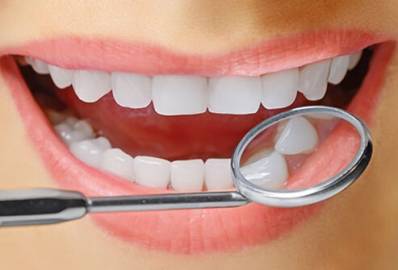Teeth whitening gels have become a popular solution for achieving that bright, Hollywood smile. But do they really work, and are they worth the investment? This article dives into the science behind teeth whitening gels, exploring their effectiveness, safety, and the latest trends in teeth whitening products.
How Do Teeth Whitening Gels Work?
Teeth whitening gels primarily contain either hydrogen peroxide or carbamide peroxide, both of which serve as bleaching agents. These chemicals penetrate the enamel to break down stains into smaller, less concentrated particles, resulting in a lighter tooth shade. Here’s a comparison of the common bleaching agents used:
| Bleaching Agent | Typical Concentration | Effectiveness | Application Frequency |
|---|---|---|---|
| Hydrogen Peroxide | 6% – 10% | Fast-acting | Short-term use |
| Carbamide Peroxide | 10% – 44% | Slow, longer-lasting | Used over longer periods |
Hydrogen peroxide tends to work more quickly, often yielding noticeable results within a few days, whereas carbamide peroxide works at a slower pace but is less likely to cause tooth sensitivity due to its gradual release.
Effectiveness: What Does the Research Say?
Numerous studies have shown that teeth whitening gels are effective in reducing surface stains caused by food, drinks, and lifestyle habits. A recent clinical study revealed that participants using hydrogen peroxide-based whitening gels experienced an average improvement of 4 to 5 shades over two weeks of use.
- Surface Stains: Teeth whitening gels work effectively on stains caused by coffee, tea, red wine, and smoking.
- Intrinsic Stains: Deep, intrinsic stains, such as those caused by certain medications or fluorosis, are more challenging to remove, and results may vary significantly.
In general, teeth whitening gels are most effective for individuals with extrinsic discoloration—stains found on the outer layer of teeth. They are less effective for deep or naturally darker teeth, which may require professional in-office treatments.
Whitening Gel Options and Their Costs
| Whitening Product Type | Average Cost (USD) | Duration of Results |
|---|---|---|
| Over-the-counter Whitening Gel | $20 – $50 | 1 – 3 months |
| Professional At-Home Kit | $100 – $400 | 6 – 12 months |
| In-Office Whitening Gel Treatment | $500 – $1,200 | 1 – 3 years |
The table above shows that while over-the-counter products are more affordable, they also provide results that are less enduring compared to professional-grade whitening kits. Professional at-home kits generally contain higher concentrations of peroxide, which makes them more effective at maintaining whiter teeth for a longer period.
Effectiveness of Home Teeth Whitening Methods
The Safety of Whitening Gels
One of the biggest concerns with teeth whitening gels is safety. The most common side effect is tooth sensitivity, which occurs when the bleaching agents temporarily increase the permeability of the tooth enamel. This sensitivity is typically short-lived and can be managed with desensitizing toothpaste.
The American Dental Association (ADA) recommends consulting a dentist before using any whitening products, particularly for individuals with dental restorations, such as crowns or fillings, as the gels do not affect these materials and can result in uneven whitening.
Practical Examples: What Real Users Experience
- Case 1: A 28-year-old who used an over-the-counter whitening gel reported a noticeable improvement in tooth color after two weeks, moving from a shade A3 to A1 on the dental shade guide. The user noted some sensitivity during the first week, which subsided with the use of fluoride toothpaste.
- Case 2: A 42-year-old opted for a professional at-home whitening kit provided by their dentist. After three weeks of use, the individual achieved a result comparable to an in-office treatment, with minimal sensitivity. This outcome highlights that professional kits, while more costly, can provide significant results comparable to in-office procedures.
Trends in Teeth Whitening: The Rise of Natural Whitening Alternatives
Interestingly, the trend towards natural whitening alternatives has gained traction over recent years. Ingredients like activated charcoal, baking soda, and even coconut oil pulling have become popular for those looking to avoid peroxide-based treatments. However, it’s essential to understand that these natural methods are largely anecdotal and lack the clinical efficacy of peroxide-based gels.
Recent surveys indicate that nearly 30% of individuals trying to whiten their teeth prefer natural methods initially before moving on to over-the-counter gels if they don’t achieve the desired results. This approach speaks to the rising consumer interest in minimizing chemical use in personal care products.
Advice from Our Editorial Team
Teeth whitening gels can be a highly effective tool for removing extrinsic stains and achieving a whiter smile. If you are considering using whitening gels, opt for products with an appropriate concentration of hydrogen or carbamide peroxide, depending on your sensitivity level and the speed at which you want to see results. For those with sensitive teeth, starting with a lower concentration is often best to avoid discomfort.
While over-the-counter products can be convenient and affordable, for longer-lasting and more dramatic results, a professional at-home kit or in-office treatment may be worth the investment. Always consult with a dentist before starting any whitening regimen to ensure it is safe for your specific dental health needs.






